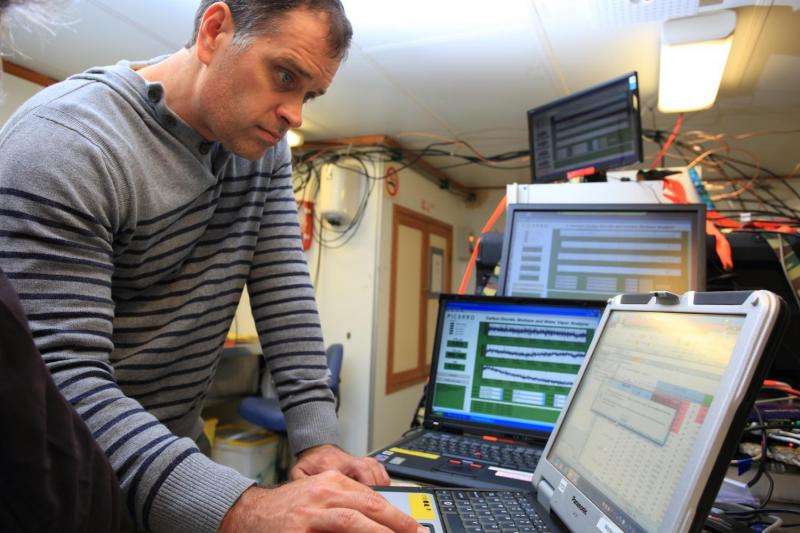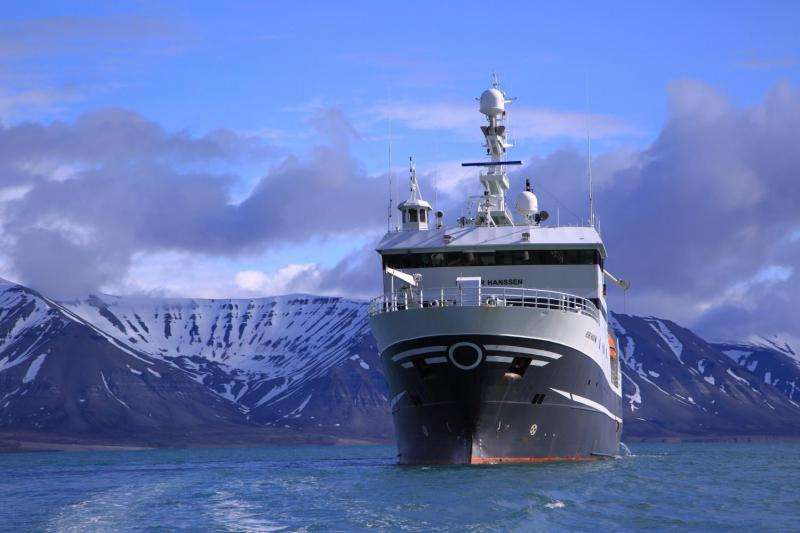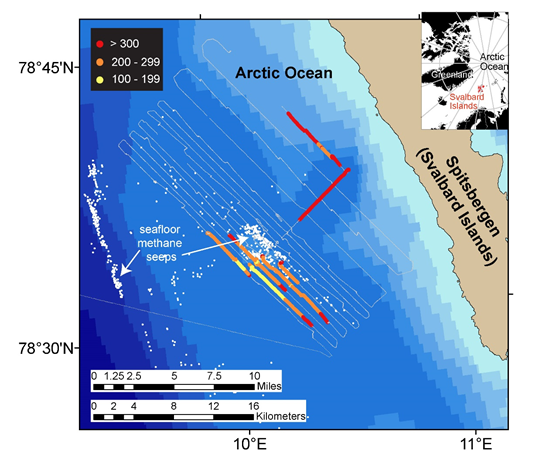Ocean absorption of carbon dioxide compensates for emissions from seafloor methane seeps

The ocean waters near the surface of the Arctic Ocean absorbed 2,000 times more carbon dioxide from the atmosphere than the amount of methane that escaped into the atmosphere from the same waters, according to a study by the USGS Gas Hydrates Project and collaborators in Germany and Norway. The study was conducted near Norway's Svalbard Islands, above several seafloor methane seeps.
Methane is a more potent greenhouse gas than carbon dioxide, but the removal of carbon dioxide from the atmosphere where the study was conducted more than offset the potential warming effect of the methane emissions that were observed.
"If what we observed near Svalbard occurs more broadly at similar locations around the world, it could mean that methane seeps have a net cooling effect on climate, not a warming effect as we previously thought," said USGS biogeochemist John Pohlman, who is the paper's lead author. "We are looking forward to testing the hypothesis that shallow-water methane seeps are net greenhouse gas sinks in other locations."
During the study, scientists continuously measured the concentrations of methane and carbon dioxide in near-surface waters and in the air just above the ocean surface. The measurements were taken over methane seeps fields at water depths ranging from 260 to 8530 feet (80 to 2600 meters).
Analysis of the data confirmed that methane was entering the atmosphere above the shallowest (water depth of 260-295 feet or 80-90 meters) Svalbard margin seeps. However, the data also showed that significant amounts of carbon dioxide were being absorbed by the waters near the ocean surface, and that the cooling effect resulting from carbon dioxide uptake is up to 230 times greater than the warming effect expected from the methane emitted.

Most previous studies have focused only on the sea-air flux of methane overlying seafloor seep sites and have not accounted for the drawdown of carbon dioxide that could offset some of the atmospheric warming potential of the methane.
Photosynthetic algae (marine phytoplankton) appeared to be more active in the near-surface waters overlying the seafloor methane seeps, a phenomenon that would explain why so much carbon dioxide was being absorbed. Previous research has shown that when cold, nutrient-rich waters come up from the depths, algae near the surface can use the nutrients to enhance their photosynthetic processes, resulting in more carbon dioxide being absorbed from the atmosphere. However, this study is the first to make this observation where methane-rich waters rise to the surface.
Jurgen Mienert, the director of the Centre for Arctic Gas Hydrate, Environment and Climate (CAGE) at the University of Tromso, Norway, said, "At CAGE, we are fortunate to have access to expertise, equipment, and a ship platform that allow us to launch sustained research focused on the Arctic Ocean. Collaborating with the USGS Gas Hydrates Project and GEOMAR on the important issue of sea-air flux of greenhouse gases above seafloor methane seeps has been rewarding for all of the researchers involved."

The research was conducted during a research expedition sponsored by CAGE, and supplementary data was collected by researchers from CAGE and the GEOMAR Helmholtz Centre for Ocean Research in Kiel, Germany. USGS involvement in the Svalbard margin expeditions was partially supported by the U.S. Department of Energy.
The USGS Gas Hydrates Project is an international leader in the study of methane dynamics related to environmental and energy issues. In addition to the expeditions on the Svalbard margin, USGS has studied the interchange between methane and carbon dioxide at the ocean surface in Alaska's Beaufort and Bering Seas, on the U.S. Atlantic margin, and in the Baltic and North Seas.
More information: John W. Pohlman et al. Enhanced CO uptake at a shallow Arctic Ocean seep field overwhelms the positive warming potential of emitted methane, Proceedings of the National Academy of Sciences (2017). DOI: 10.1073/pnas.1618926114
Journal information: Proceedings of the National Academy of Sciences
Provided by United States Geological Survey





















